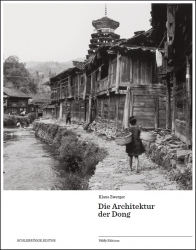Die Architektur der Dong

Die Architektur der Dong
Klaus Zwerger
Published in the series of PALFFY EDITIONS
German, 388 pages, 513 illustrations in b/w, 23,2 x 29,5 cm, hardcover
2013
ISBN 978-3-902833-42-6
€ 60,00 [A]
€ 58,30 [D]
Dong people’s Architecture („Die Architektur der Dong“) describes the traditional buildings of a minority living in the border region of China’s Guizhou-, Guangxi- and Hunan provinces. In discussing the term traditional the author explains that he investigates objects constantly changing according to their actual needs. Only in the end of the 20th century there occurred a break when the building material wood was displaced by brick and concrete at always faster paces.
Klaus Zwerger declares his belief that dwelling houses as well as outbuildings and of course representative communal architectures have to be seen as results of an age-long adaptation process to topography, climate, resources and economic living conditions. The buildings’ typological variations are interpreted as an answer to this consideration. In a brief introductory part the reader gets an insight into aspects of majority’s people vernacular architecture in China. The main part deals with Dong architecture. The buildings and the building methods are described as embedded into Dong people’s cultural everyday life. Going from the general to the particular the reader has the opportunity to dive deeply into a culture now subjected to tremendous change. The last chapter discusses exemplarily architectural expressions of sociological changes. In numerous photographs and drawings explained and classified in all details the author preserves a memory of a highly ecological vanishing building culture.

